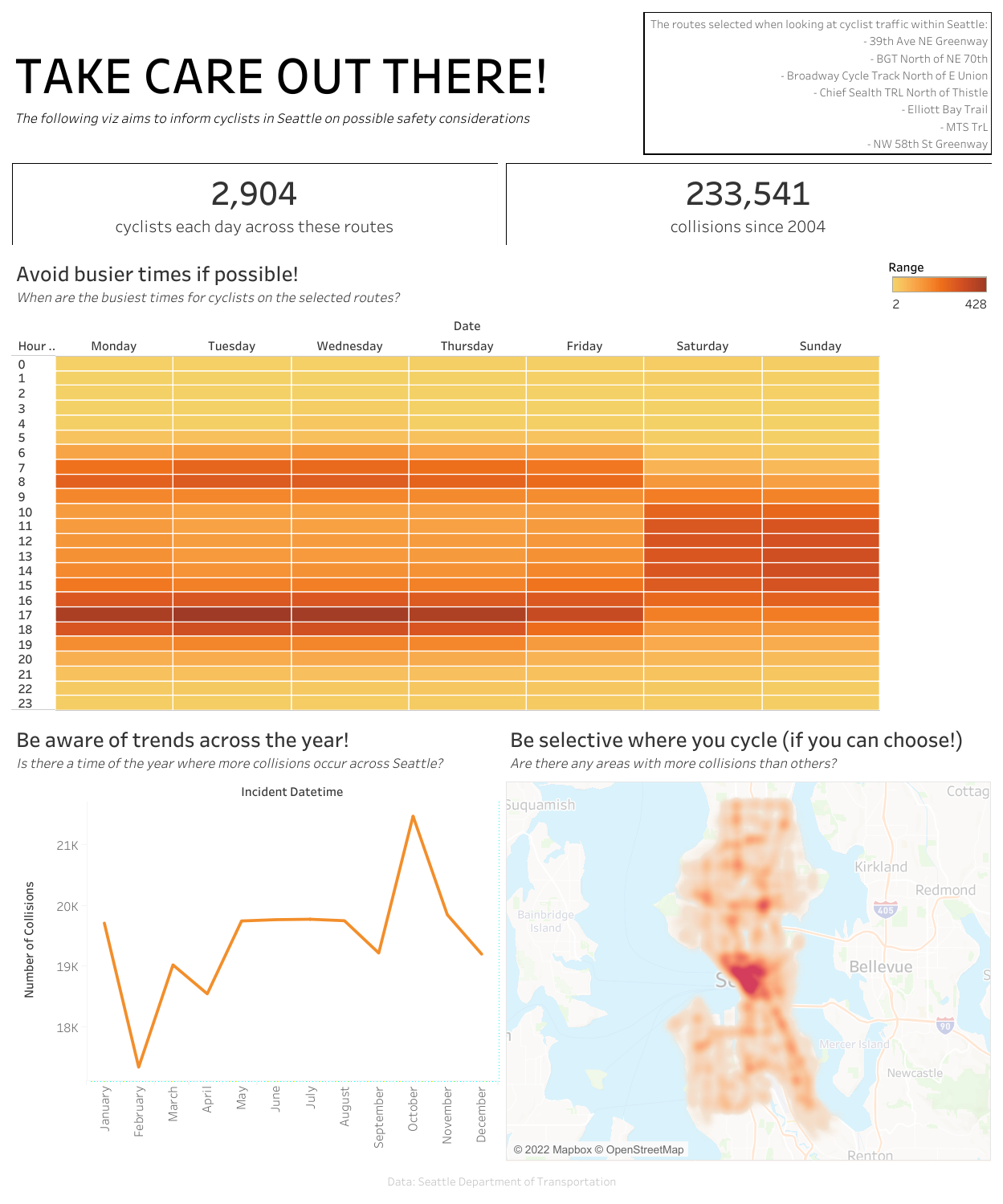Day 3 begun with a twist, which was then twisted again. The data we were going to be prepping and visualising was cycling data for certain routes in Seattle, but we were supposed to visualise this in Tableau version 7 - which for context was released in 2012 just before my 17th birthday - so you'd anticipate a fair few differences in terms of functionality. However, it turns out that this version is so old that the link to download it didn't work, so instead we were given the task of creating our dashboard in an even scarier way - using Tableau Public Web Edit.

Which actually ended up being better to use than expected. But before that, I needed to find supplemental data and get prepping. I found some data (also from the Seattle government) which was looking at collisions for cyclists since 2004, so that worked well. From this, my idea was to create a dashboard to inform cyclists in Seattle of some trends which might help with safer cycling in the future.
I downloaded the 7 csv's on the cycling routes and put them into Alteryx, which I then split into two groups as only one had a pedestrian count, as well as differing directions in which they were moving when being counted. The good news is that due to the nature of my dashboard I wouldn't need this information, so all that was needed was the count. After a bit of fun trying to work the dates into the correct format, I output that data with the below flow (which looks more complicated than it is):

Next was the collisions data which looks a lot nicer - the main part worth highlighting was the beginning where I created points for each of the collisions as it provided Longitude and Latitude information. This was great as it allowed me to incorporate a map into my viz.

Last but certainly not least; the visualising. A few of the fields came together quite easily due to adequate cleaning earlier in the day, however some were certainly tricky - particularly the density map. The worksheet creation of Tableau Public Web Edit was pretty good and felt very similar to Desktop which was ideal given that's where most of my work has been done previously. Mostly the differences were just having to find different ways of doing the same thing e.g. changing the view from 'Standard' to 'Entire View' is hidden in a toolbar button as opposed to being a drop down menu. The only thing that seems impossible to do (which would be possible in Desktop) was to be able to hide the field labels for the charts - as you can see 'Date' and 'Incident Datetime' on the Heatmap and Line charts...

Overall, it was an interesting dataset and I feel like the collision data really helped to direct my dashboard where I wanted it to go. Tableau Public's web editing was also not as bad as I'd believed it to be previously, so it's good to know that I could use it in future if needed too. Day 3 complete! ✅
